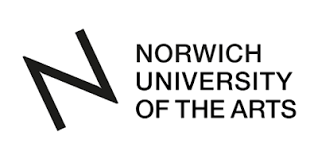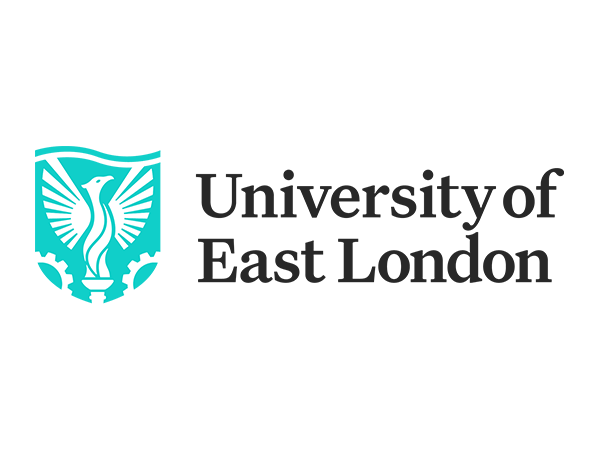Fashion Design Abroad: Unleash Your Creativity on a Global Stage
Are you an aspiring fashion enthusiast with a dream of making your mark in the global fashion industry? Studying Fashion Design abroad offers an unparalleled opportunity to immerse yourself in diverse fashion cultures, learn from world-renowned experts, and gain a competitive edge in this dynamic field. This comprehensive guide will walk you through everything you need to know about pursuing your fashion dreams overseas, tailored specifically for Indian students.
Why Study Fashion Design Abroad?
The fashion industry is a global phenomenon, constantly evolving and influenced by trends from every corner of the world. Studying abroad provides a unique perspective and a wealth of benefits:
- Global Perspective: Experience fashion beyond Indian borders. Understand different aesthetics, production methods, and consumer behaviors in major fashion capitals like Paris, Milan, London, and New York.
- Access to Top Institutions: Gain admission to some of the most prestigious fashion schools globally, known for their cutting-edge curricula, industry connections, and state-of-the-art facilities.
- Networking Opportunities: Build a valuable network with international students, faculty, and industry professionals. These connections can be pivotal for internships, collaborations, and future career prospects.
- Specialized Skills: Develop advanced skills in areas such as haute couture, sustainable fashion, fashion technology, digital design, and trend forecasting, often not as extensively covered in domestic programs.
- Cultural Immersion: Living and studying abroad enriches your personal and professional life, fostering independence, adaptability, and a broader understanding of global cultures, which directly influences design sensibilities.
- Portfolio Enhancement: Create a diverse and impressive portfolio showcasing your international exposure and unique design vision, making you a more attractive candidate to employers worldwide.
Popular Study Destinations for Fashion Design
Several countries are renowned for their vibrant fashion scenes and excellent educational institutions. Here are some top choices:
Italy: The Cradle of Luxury
Italy is synonymous with luxury, craftsmanship, and timeless elegance. Cities like Milan and Florence are home to iconic fashion houses and some of the world's best fashion schools.
- Key Cities: Milan, Florence, Rome
- Strengths: Haute couture, luxury brand management, textile innovation, traditional craftsmanship, leather goods.
- Notable Institutions: Istituto Marangoni, Polimoda, Domus Academy.
France: The Epicenter of Haute Couture
Paris, the undisputed fashion capital, offers an unparalleled experience for aspiring designers. French fashion education emphasizes creativity, artistry, and a deep understanding of fashion history.
- Key City: Paris
- Strengths: Haute couture, fashion history, luxury marketing, trend forecasting, design innovation.
- Notable Institutions: ESMOD, Institut Français de la Mode (IFM), Parsons Paris.
United Kingdom: Avant-Garde and Innovation
London is known for its edgy, avant-garde style and a strong focus on creativity and experimentation. UK fashion schools encourage students to push boundaries and develop their unique design voice.
- Key City: London
- Strengths: Experimental design, fashion communication, sustainable fashion, menswear, knitwear.
- Notable Institutions: Central Saint Martins (CSM), London College of Fashion (LCF), Kingston University.
United States: Commercial and Diverse
The US offers a broad spectrum of fashion education, from commercial sportswear to high fashion. New York City is a major hub for fashion, media, and business.
- Key Cities: New York, Los Angeles
- Strengths: Commercial fashion, fashion marketing, retail management, costume design, sportswear.
- Notable Institutions: Fashion Institute of Technology (FIT), Parsons School of Design, Savannah College of Art and Design (SCAD).
Course Structure and Specializations
Fashion design programs abroad typically cover a wide range of subjects, often allowing for specialization in later years. Common areas of study include:
- Fashion Illustration and Drawing: Developing visual communication skills.
- Pattern Making and Draping: Understanding garment construction.
- Textile Science and Technology: Knowledge of fabrics, materials, and their properties.
- Garment Construction: Practical skills in sewing and tailoring.
- Fashion History and Theory: Contextualizing contemporary fashion.
- Fashion Marketing and Branding: Understanding the business side of fashion.
- Digital Design (CAD): Using software for design and pattern creation.
- Trend Forecasting: Predicting future fashion directions.
- Sustainable Fashion: Ethical and eco-conscious design practices.
- Collection Development: The process of creating a cohesive fashion line.
Many programs also offer specializations such as:
- Womenswear Design
- Menswear Design
- Knitwear Design
- Accessory Design (Bags, Shoes, Jewelry)
- Textile Design
- Fashion Communication and Journalism
- Fashion Styling
- Fashion Business and Management
- Costume Design
Admission Requirements for Indian Students
While specific requirements vary by institution and country, here’s a general overview:
| Requirement Category | Details |
|---|---|
| Academic Qualifications | Higher Secondary Certificate (10+2) with strong academic performance for undergraduate. Bachelor's degree in a relevant field for postgraduate. |
| English Language Proficiency | IELTS (6.0-7.0) or TOEFL (80-100) scores are typically required. Some institutions may accept PTE or Duolingo. |
| Portfolio | This is crucial for fashion programs. It should showcase your creativity, technical skills, and unique design aesthetic through sketches, mood boards, photographs of garments, and other artistic works. |
| Statement of Purpose (SOP) | A compelling essay explaining your motivation for studying fashion, career aspirations, and why you chose a particular institution/program. |
| Letters of Recommendation (LORs) | Usually 1-3 letters from teachers or employers who can attest to your academic abilities and potential. |
| Resume/CV | Highlighting any relevant experience, internships, or fashion-related projects. |
| Interviews | Some top schools conduct interviews (in-person or virtual) to assess your passion, communication skills, and suitability for the program. |
Building a Strong Portfolio
Your portfolio is often the most important part of your application. Here are tips for creating an impactful one:
- Show Variety: Include a range of work demonstrating different skills – drawing, painting, photography, textile work, garment construction.
- Originality: Showcase your unique perspective and creative voice.
- Technical Skills: Include examples of pattern making, draping, and sewing if you have them.
- Process over Product: Don't just show finished pieces; include sketches, mood boards, and research to illustrate your design process.
- Digital Presentation: Most schools prefer digital portfolios. Ensure it's well-organized, high-resolution, and easy to navigate.
- Seek Feedback: Get opinions from mentors, art teachers, or fashion professionals.
Career Opportunities After Studying Abroad
A degree in Fashion Design from an international institution opens doors to a plethora of exciting career paths:
- Fashion Designer: Creating collections for ready-to-wear, haute couture, sportswear, or specialized niches.
- Textile Designer: Developing new fabrics, prints, and patterns.
- Pattern Maker/Garment Technologist: Translating designs into technical patterns and ensuring production quality.
- Fashion Stylist: Curating looks for photoshoots, celebrities, or personal clients.
- Fashion Buyer/Merchandiser: Selecting and procuring collections for retail, analyzing market trends.
- Fashion Illustrator: Creating visual representations of fashion designs.
- Fashion Journalist/Editor: Writing about trends, designers, and the industry for magazines or online platforms.
- Visual Merchandiser: Designing compelling store displays and window presentations.
- Costume Designer: Creating apparel for film, theatre, or television.
- Brand Manager: Overseeing the marketing and positioning of a fashion brand.
Many graduates also venture into entrepreneurship, launching their own labels and contributing to the global fashion landscape.
Funding Your Education: Scholarships and Financial Aid
Studying abroad can be a significant investment, but various financial aid options are available:
- University-Specific Scholarships: Many institutions offer scholarships based on academic merit, portfolio strength, or financial need.
- Government Scholarships: Check for scholarships offered by your home country's government (e.g., Indian government scholarships) or the host country's government.
- External Organizations: Look for scholarships from fashion industry associations, cultural exchange programs, or private foundations.
- Student Loans: Education loans from banks in India or the host country can help cover tuition and living expenses.
- Part-time Work: Many countries allow international students to work part-time during their studies, which can help offset living costs.
Living Abroad: What to Expect
Beyond academics, studying abroad is a life-changing personal experience:
- Accommodation: Options include university dorms, shared apartments, or homestays. Research costs and availability well in advance.
- Cost of Living: Major fashion cities can be expensive. Budget carefully for rent, food, transport, and personal expenses.
- Visa Process: Start your student visa application early, as it can be a lengthy process. Ensure you have all required documents.
- Cultural Adjustment: Be prepared for cultural differences. Embrace new customs, languages, and ways of life.
- Healthcare: Understand the healthcare system in your host country and ensure you have adequate health insurance.
Ready to Take the Plunge?
Studying Fashion Design abroad is an exhilarating journey that promises personal growth, academic excellence, and a gateway to a successful career in the global fashion industry. With careful planning, a strong portfolio, and an open mind, you can turn your fashion dreams into a tangible reality.
Embrace the challenge, immerse yourself in new cultures, and let your creativity flourish on the international stage. The world of fashion awaits!






















